New York was recreated on a virtual set for the Dakota Johnson and Sean Penn movie Daddio, and nobody knew
How VFX studio Disguise made Manhattan in a studio, using impressive virtual production tech.
Being both a longtime Sean Penn fan, as well as a born and bread New Yorker, it should be no surprise that the minute his new film Daddio was out, I wanted to see it. Little did I realise my favourite city wasn't real, or rather, it was remade in a virtual set by VFX firm Disguise to deliver a Manhattan-set movie on a small budget and eke our stellar performances from its actors.
Daddio is the story of a NYC cab driver, played by Sean Penn, picking up a JFK airport fare, Dakota Johnson, and driving her to Manhattan. Almost the entire 139 minute film takes place in the cab. This is not unlike other classic film gems with interesting constraints. Like 12 Angry Men that takes place all in one jury room, or The Set Up occurs in real-time.
Now imagine Daddio, a movie that imposes both constraints upon itself. Both a constraining set, and a plays-in-real-time paradigm. Plus, imagine what shooting an entire film on a New York highway would be like! Well, this is what was going through my mind when I watched the film. I kept asking, “How’d they do this shot, and that shot?” Well, now I know.
Disguise recreated New York on a virtual set
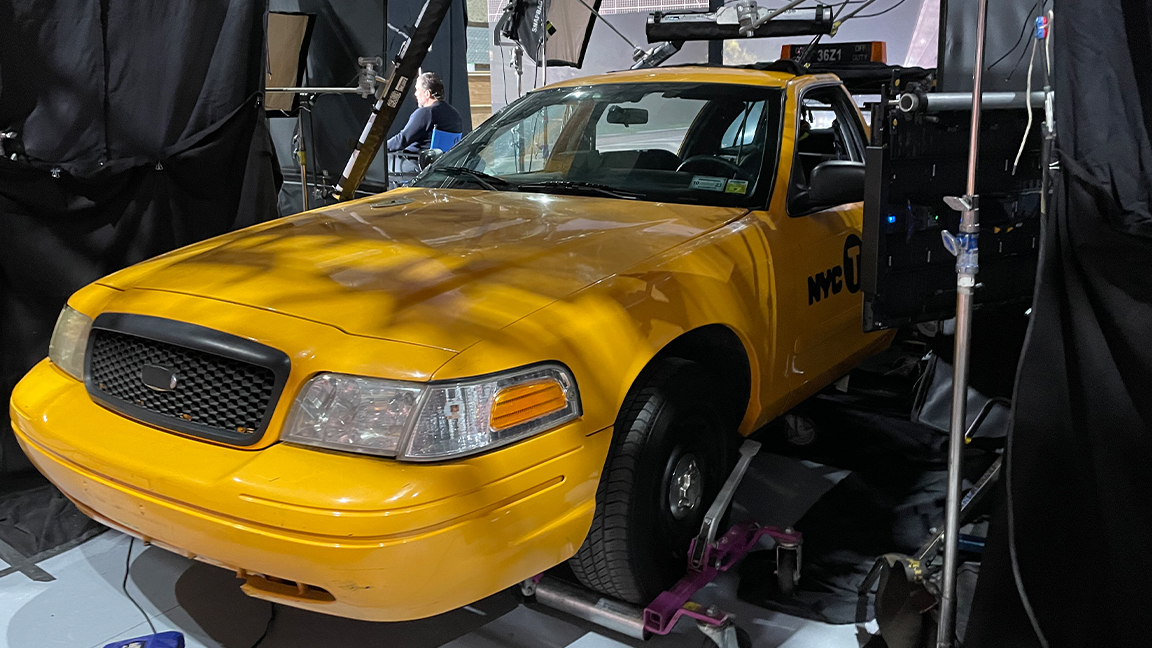
Disguise is a visual effects and technology development company that describes itself as “The industry-leading platform at the heart of the new era of visual experiences". This technology started when founder Ash Nehru, wrote code to help U2 on their Vertigo tour in 2005. Back then, it was difficult for bands to envision how low-resolution stage content might look on big LED video screens during the show. Ash’s code helped U2 to pre-visualise their content, and that code is what became Disguise’s Designer software today.
So when virtual production began to take off a few years ago with projects like The Mandalorian, and the merger of established and new filmmaking techniques, Disguise already had the tools to help filmmakers use LED screens. Their tech currently powers the effects work at over 400 virtual production studios in over 100 countries around the globe.
As Addy Ghani, VP of Virtual Production at Disguise told me, “We provide a unified platform that combines high-performance computer hardware with our Designer software. Together, our hardware and software gives filmmakers pixel-perfect real-time content control, along with a real-time visualiser to preview and edit LED display surfaces.”
“When everything’s running, nobody’s thinking about Disguise, and that’s just what we want.” said Addy.
Get the Creative Bloq Newsletter
Daily design news, reviews, how-tos and more, as picked by the editors.
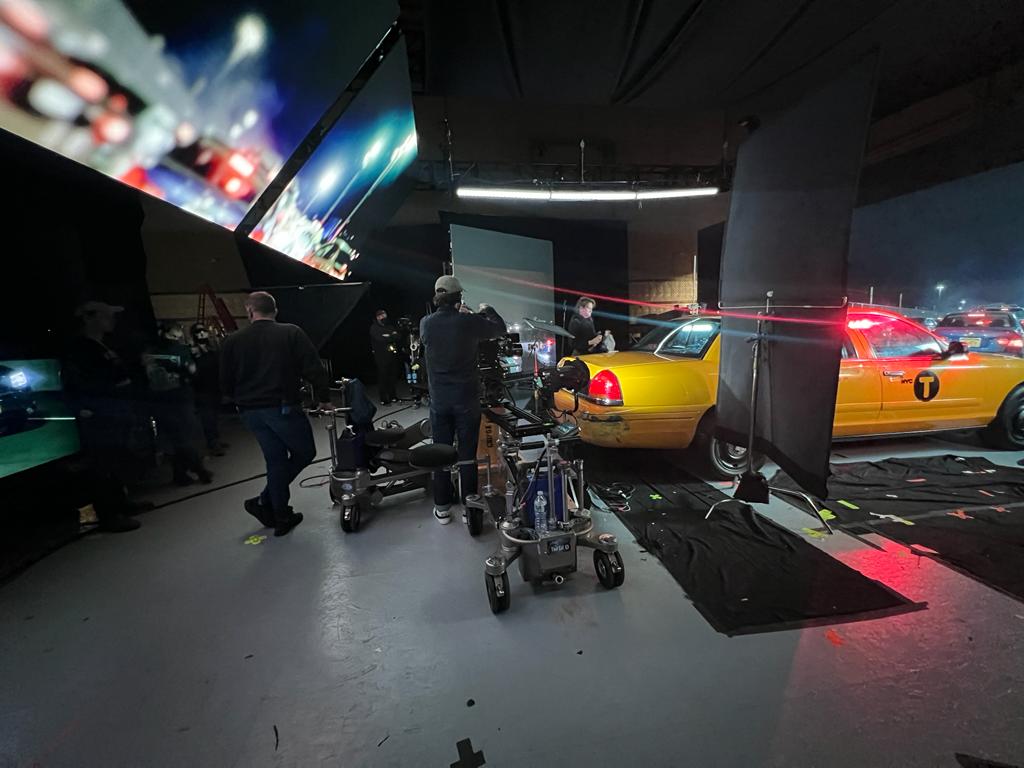
Even beyond the initial sale and implementation, Disguise adds more. A cloud platform that integrates with the system and helps in areas of backup and remote locations, as well as continuing support and training to help keep what is a complex system working at top performance.
For Daddio, Disguise provided its GX 3 Server. A system that has had great success in live shows, like concert tours. But is easily adapted for use on the virtual film stage. This became an important aspect of production for Christy Hall, who was not only the writer, but the director and producer as well.
At first Christy “selected virtual production because it would reduce the need to rig a moving cab or pay fees to shoot on location". But the technology provided other benefits, including creating a safe, realistic set for the actors to perform in. “I was excited to use the technology,” says Christy.
She adds: “It created an immersive environment for the cast, so when Sean was driving, he kept almost being afraid he was going to hit things. And then Dakota looks out the window and cars are whizzing by. She could actually see the street and everything, so they're engaging with a real sense of time and place.”
Actors respond to the real time feel of virtual sets
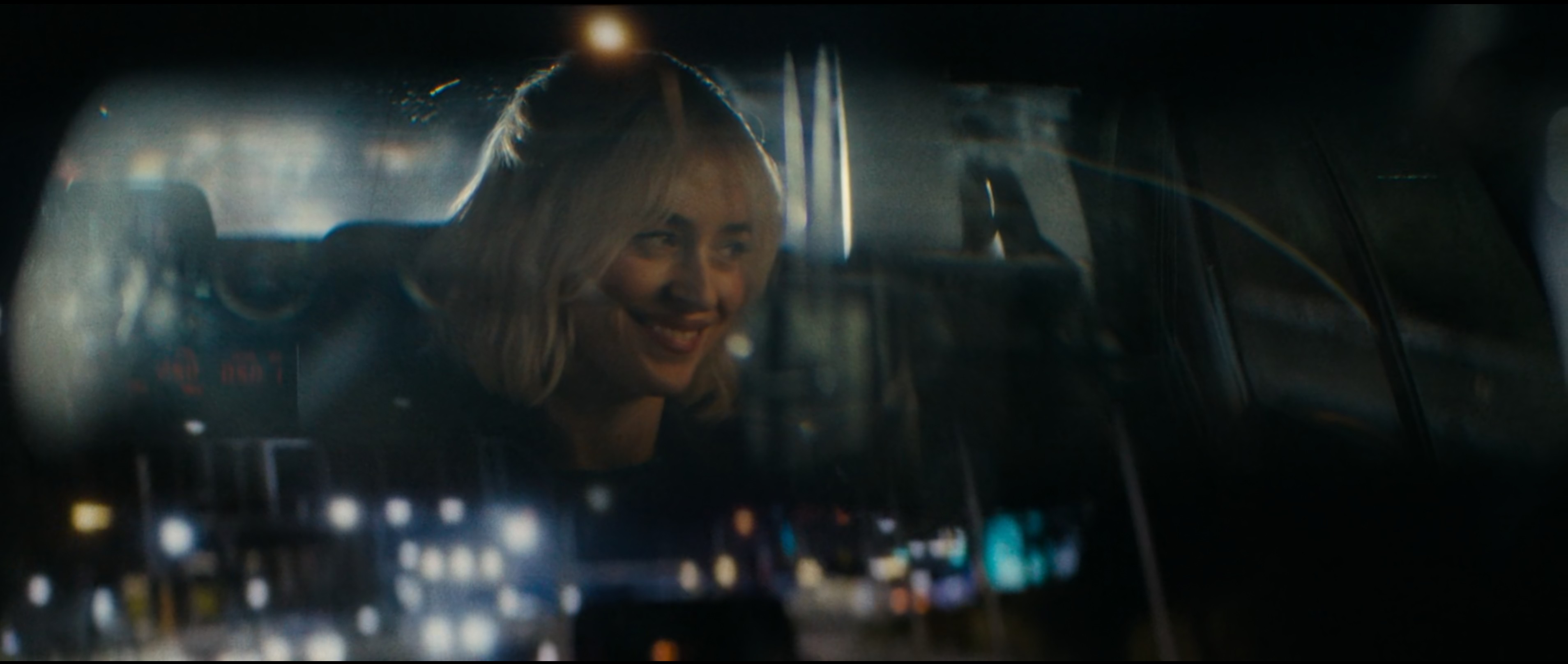
Virtual sets bring the ability to 'mix' video much like audio mixing has been able to do for decades. Virtual film production brings the ability to produce different elements at different times, and merge them later. It's why Dune's cinematographer Greig Fraser told us earlier this year platforms like Unreal Engine and Unity are "the best training tools that I could possibly imagine". In the case of Daddio, it meant that the highway backgrounds could be shot long before the scenes with the actors.
The team mapped the taxi route Hall wanted Daddio’s characters to take on Google Street View. They then worked with Plate Pros, a company that defines itself as 'Photographic Virtual Environment Specialist' to capture the route in the real world. “They captured two hours of 4K car process plates within only one night of shooting,” says Christy.
It’s back in the studio where it all comes together. And for that Christy chose 4Wall’s virtual LED stage. Using Disguise’s GX 3 media servers, all the car process plates were reprojected and played back onto the LEDs.
Finally, a real New York taxi cab was then cut in half so the team could put the camera in front of Dakota Johnson to capture her performance. The level of control is tremendous.
Why creatives love virtual sets
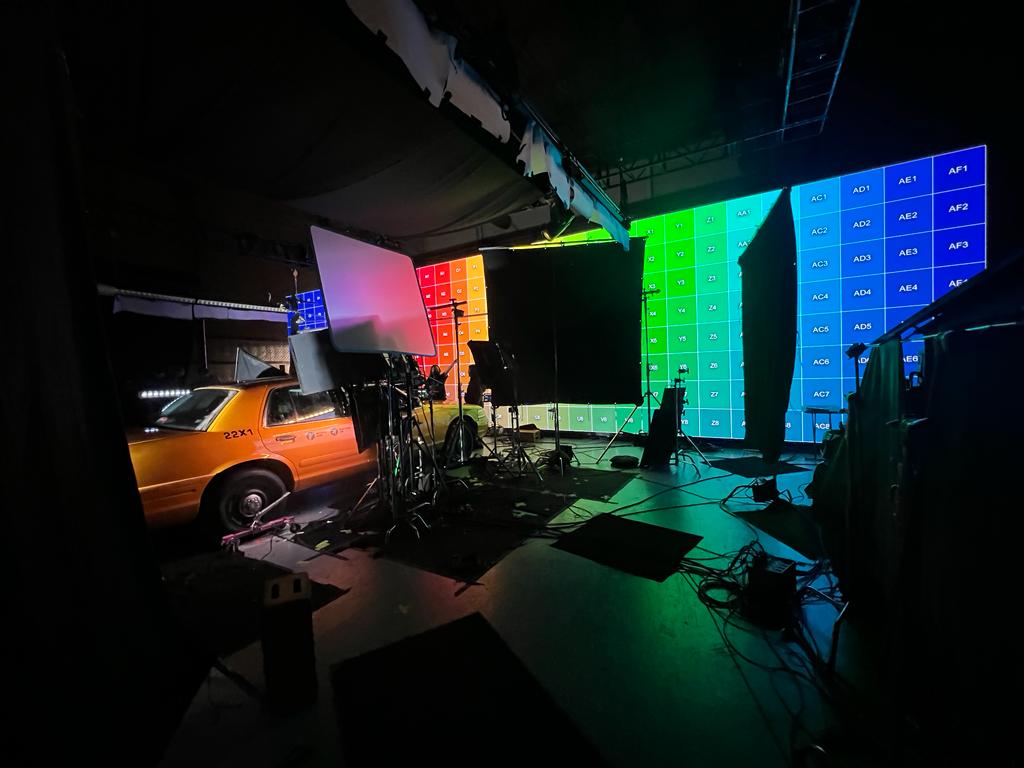
Let’s face it, we creatives are control freaks, at least when it comes to our artwork. Going digital enables us a level of control that, if anything, leads to indulgent levels of control. For filmmakers this started with the green screen and continues with the new computer controlled screen technology and LED Volume stages that can be altered live, in real time (if the content is pre-made in advance).
Each of these technologies still offer benefits over each other, neither is perfect. So don’t think that the green screen is dead. For example, the beauty of green screen is that it strips the characters so they are masked, which means background plates (to use the film term) can be dropped in and changed ad nauseam in post production.
By contrast, today’s virtual set technology has moved to computer controlled high-def jumbo screens. Where the chosen background plates are displayed on the screens behind the actors and foreground scene elements. Plates can be video, 3D modelled, or even painted stills. The advantage is clear, the actors get a feeling of the environment they are pretending to be in, with 'live' authentic lighting and scene interaction.
The screens can even be bright enough to actually light the scenes, and create reflections of the environment on the actors and foreground props. This can result in much better lighting than we get from green screen, which has its own lighting limitations.
But the downside is that all background imagery needs to be completed before the filming of the actors. Remember, this process doesn’t strip out the actors. So while it gives tremendous control, like old school shooting, whatever you shoot, is what you get. If you set the background too bright or contrasty, you're stuck. It won't easily adjust in post.
It should be said that the concept of rear screen projection long predates even green screen. Of course old rear projections were far more limited than today’s virtual studio.
“Using Disguise gave us the entire canvas,” says Mathew Leland, Special Projects VP at 4Wall. He explains that with Disguise, the team was able to easily twist and warp the plates to the correct perspective for the camera, as well as combine and play back multiple video plates in real time.
“That means that although we have these individual screens, it's all within one media server,” Mathew adds. “It allows us to map however we want, whether we want perspective, or sizing.”
Virtual sets mean filmmakers can do more for less
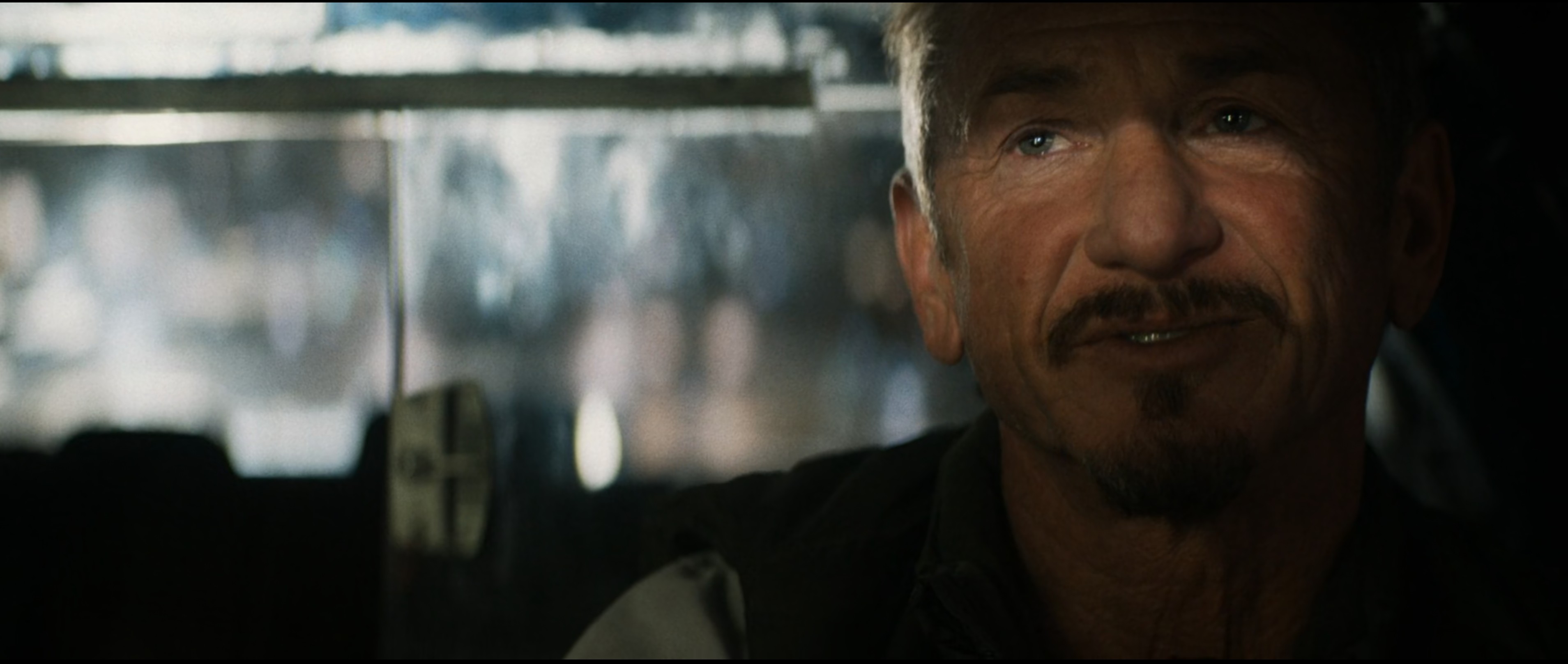
In creative ventures both big and small, the bottom line often comes down to just that, the bottom line. Money. And despite the big actors, Daddio was considered an indie production. Its $10 million dollar budget underscores the limits it team had to work within. Imagine the insurance costs alone, for filming big name actors in a car, at night, on a New York highway.
As Christy flatly states, “It would be impossible to make this feature with the budget we had, without using virtual production.”
Of course even though a $10 million dollar is considered small today, most indie filmmakers can only dream of such budgets. I know plenty of indie folk that hope some day to have a $50k budget. But many directors and filmmakers do view platforms like Unreal Engine and new tech and software, the kind Disguise is developing, as the future of filmmaking.
So for those of us that deal with micro-budgets, there’s a huge take-away here. Note in the behind the scene images they are only using a panel or two in some shots. Some of these panels don’t look any larger than a 75-inches flat panel TV available at your nearest box store for as low at $500.
So like green screen, some of this technology is available to most of us. Even if it won’t have the same level of sophistication as Disguise is offering, the technology in a broader sense is available.
After an international premiere at Toronto Film Festival, Daddio was picked up by Sony Pictures Classics and is now screening in select cinemas across the United States and Canada, and has been released on various streaming platforms. In the US you can watch Daddio on Netflix, in the UK it's available t stream on Apple TV.
Inspired by Daddio? Then read our guides to the best 3D modelling software and best laptops for video editing, and read up on how you can use Unreal Engine to create detailed environments for use in film and games.

Thank you for reading 5 articles this month* Join now for unlimited access
Enjoy your first month for just £1 / $1 / €1
*Read 5 free articles per month without a subscription

Join now for unlimited access
Try first month for just £1 / $1 / €1
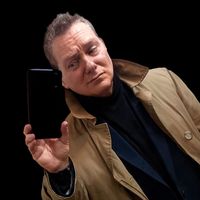
Lance Evans is creative director of Graphlink Media, a boutique creative marketing agency that specialises in building brands and has worked with such high-profile clients as Olive Garden, Miller Beer and AMEX. Lance was an early adopter of digital tools, and was on the original beta team for Photoshop. Lance has written for Creative Bloq on a wide range of topics, from technical photography tips to the ins and outs of branding.
